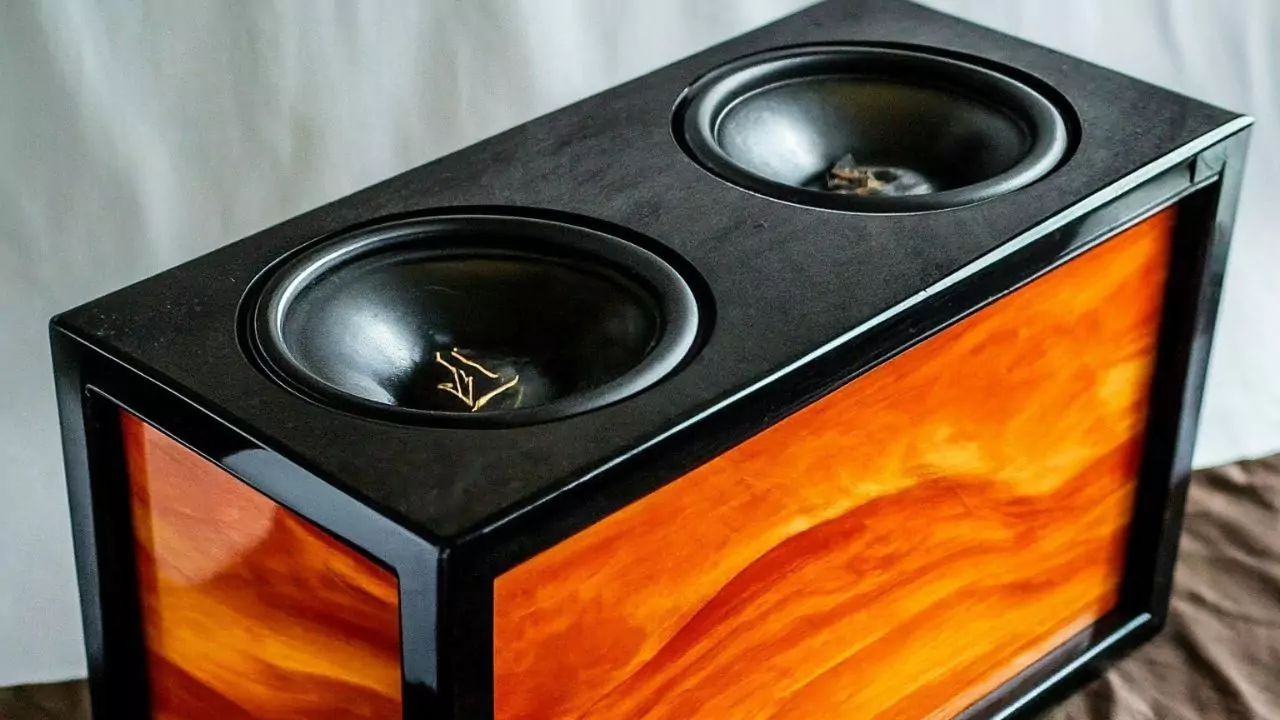If you are looking for a customized car audio setup, then you can go with a Fiberglass Subwoofer box. This has a special shape that will fit a specific space within the vehicle giving you an added advantage of making the most use of the space. It is quite different from the normal rectangular subwoofer and it will also make your car audio system look one of a kind owing to its customized look.
Let’s work out with the tutorial on how to make a Fiberglass Subwoofer..
In This Article:
Required Items
Here is the list of all the required items that you would need to construct the Fiberglass Subwoofer. The entire process would be about 30 hours of work with minimum time adjustment. So, don’t get exhausted rather gear up to get the best sound audio output setup.
- 1 Gallon Polyester Fiberglass Resin
- Fiberglass Matte
- Fleece Fabric
- Wooden Dowels
- Specific Carpeting Material
- Packing Peanuts
- Wiring Materials
- Resin Hardener
- For supports, and speaker rings – MDF
- Dremel or Rotozip or Cutter
- A GOOD Respirator
- Disposable Paint Brushes Brushes
- Masking Tape
- Tin Foil
- Glue Gun or Good Quality Adhesive Spray
- Light Sandpaper
14 Steps to Make a Fiberglass Subwoofer Box
This tutorial will help you to construct the fiberglass subwoofer box from scratch. So,
Step 1: Remove Every Item from the Trunk
You have to remove all the items from the trunk and everything that you can. This is done so that nothing comes in the way when you are setting up the audio system. If you think that the car lid is going to be a restriction, then you need to adjust it. Remove the carpet and smoothen the place to make it more than perfect for the contours of the car. To clean the area, you can use a vacuum and remove the dust that would be present in the trunk as you would not like the box to become dirty.
Step 2: Use the Tape to Layer Up
You can use the blue painters’ tape or any good quality masking tape to create a layer of tape in the area where you are going to be placing the Fiberglass subwoofer. So, at least create 2 to 3 layers and try to crisscross them and also check that resins do not seep through them because they won’t be coming off the metals or carpets.
So, you need to be very careful while using resins. Based on the area that the box will take, you can also add a 2 to 3-inch layer of tape extras, so that you can place the entire system within this taped area.
Step 3: Use a Tin Foil Layer
If you are looking for an added layer of protection from the resin so that you can prevent it from seeping into your carpet, then you can use a tin foil layer. You can create a square of the foil and then tap and overlap them as you proceed. Finally, this area would be ready for placing the glass fiber.
You also need to protect the interiors, so it is also recommended to place newspaper or plastic around the work area. If required, you can also put a sheet of plastic between the trunk and cabin. Also, you can put a sheet of plastic between the trunk and the cabin to prevent fumes from entering.
Step 4: First Apply Resin and then the Fiberglass Layer
Before you proceed, you need to wear a face mask and it should be of good quality. Otherwise, the resin and the fiberglass subwoofer would get into your lungs. This can lead to breathing problems, also you need to work through in a well-ventilated area.
So, prepare the resin by mixing it in the exact way, by following the package instructions, so that it can harden. Use small amounts at a time so that it doesn’t become a hurdle to work with large amounts.
You can mix small batches in plastic cups or small areas so that they can provide you a good coverage and with the right amount of hardener and resin. After the resin is prepared, you have to prepare the glass fiber. So, you simply need to rip up the matte into a manageable strip and you are done.
So, remember that you have to create something like a paper mache. You need to use the brush, dip it in resin, and spread it over the area where you are going to work. Next, take a glass strip and place it over it, and again dab resin onto the strip using the brush. You need to wait till it becomes transparent and if you see bubbles, then clear them using a brush as these are simply air-trapped. If there are too many air bubbles, then it can break the box into pieces.
Keep layering the fiberglass, and cross over the other pieces, do not stop until you have a good layer that is going to cover the taped area. You have to make the shield big enough as it will be trimmed down later. Wait for the structure to dry and become touchable and it takes around 2 hours for this process. However, if you want to fasten the process you can use a hair dryer.
Step 5: Add Additional Glass
Using the same process, you can add a few extra layers of fiberglass if required. You must move it only if you make sure that it is strong enough. So, a total of 4 to 5 layers of glass would be perfect on the inside. After you remove the box from the car, you have to remove the tape from the box and also from the car. Now, it is time to do the glassing outside the car and ensure that everything is dried up before placing them back.
Step 6: Trim the Excess parts
You might not meet the cleanest edge after adding 5 to 6 layers of fiberglass. Now, that you have added more than required, you must trim off the excess and get the perfect thickness required.
You have to place the box in the trunk and where the edge should be, you have to draw a line. Use a jigsaw or dremel to cut along the line and this should provide you with a perfect edge along with the same thickness throughout.
Step 7: Remove Every Obstruction
When you close the trunk, there might be a moving part that comes in contact with the box as you close it and you have to remove such obstructions and make a clear way for the box. Create a pocket in the box with the necessary jig from the MDF.
Next, it is time to secure the piece, so use the wooden dowels and hot melt glue wherever you find an obstruction. After placing it properly, you have to fleece and fiberglass the area and wait for the speaker rings to be placed.
Step 8: Set the Speaker Rings
Using the MDF, you have to construct the speaker ring and the subs should have some diagram of the size which would be cut based on the specification. If you like the look, then you can create a second ring, so that the sub countersink into the box. But, be careful to secure the rings.
Remember, you need to create the rings bigger than the normal size, if you are using carpet or countersinking. This way you can easily place the carpet under the subwoofer. If the rings are visible, then you can paint the rings black.
Step 9: Setting the Position and Volume
It is time to set the volume of the speaker box. While deciding, you need to consider the volume and wheel volume size as well. Now, it is time to float the speaker ring in the area you would like it, using the hot melt glue gun and dowel rods. Alternatively, you can also use a plumber metal positioning wire to hold up the speaker ring. Make sure the ring doesn’t collapse and it is firmly placed.
Step 10: Use Fleece or Any Other Fabric
Now to stretch over the opening you need either fleece, cotton, or polyester material. You need to place the fabric between the fiberglass part and the speaker rings or MDF, using hot melt glue. You also have to stretch the fabric. Check that there are no wrinkles and also everything will get stretched without any mess.
Step 11: Use Resin and Fiberglass
You can paint the fleece with resin, using a good mixture, and also apply resin and hardener. Cover the area but leave the place where you want to place the sub. You need to soak the fleece with resin and it needs to dry so that you can use this pretty solid structure.
To the fleeced area, you have to add 4 to 5 layers of fiberglass. You also need to ensure that glass should not be added to the area where you place the subs as it would be cut out later on.
Step 12: Trim the Fleece
Cut the sub hole and trim the fleece using a Dremel tool. You can also open up the area and the trimming should be done close to the MDF speaker rings. Moreover, if you notice that there are spots that are weak or building up air pockets, then you can add another layer of fiberglass inside so that the outside looks perfect.
Step 13: Sub Wiring and Sanding
You can drill a hole in the fiberglass and stick the wires through it. Along with wires, other connectors should also pass through the fiberglass. So, everything depends on you, and how you are going to work out the process, but do remember that the holes must be airtight. If any places have bubbles, then mark the places that need sanding. Also, you have to make it smooth, if you want to carpet the box. Remember, if you are using vinyl or painting, then it requires it to be smooth enough.
Step 14: Finish the Box
Finally, you need to paint the outer region of the box with your favorite color and also add a layer of vinyl. You can also carpet the interior. You can easily find the automotive carpeting and attach it to the box using the 3M adhesive spray to attach the carpet to the box. Finally, check the volume once again. You can also buy a sound deadener and attach it to the trunk which is behind the box. Install the sub, run the wire to an amp and you are good to go.
Is Fiberglass Good for Building a Subwoofer Box?
yes, Fiberglass subwoofer comes with real advantages when compared with traditional or normal subwoofer enclosures and you can prepare a custom car audio set.




